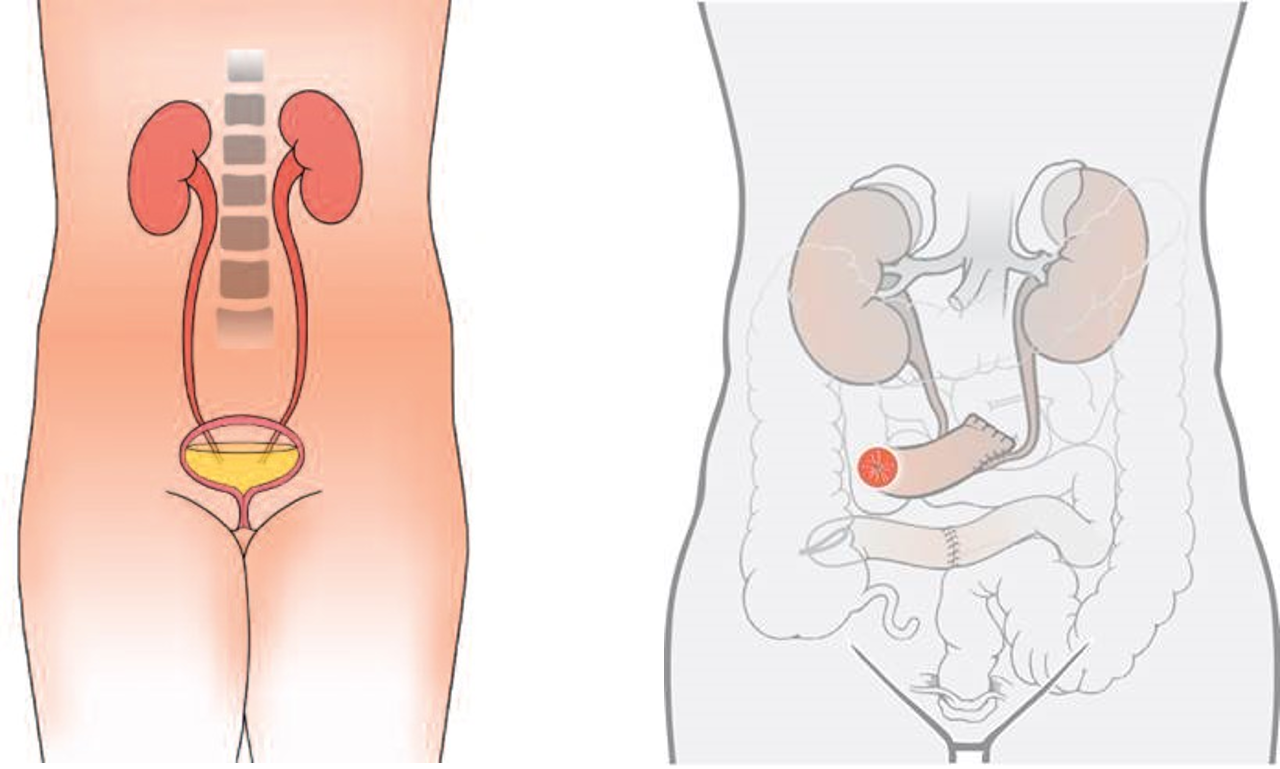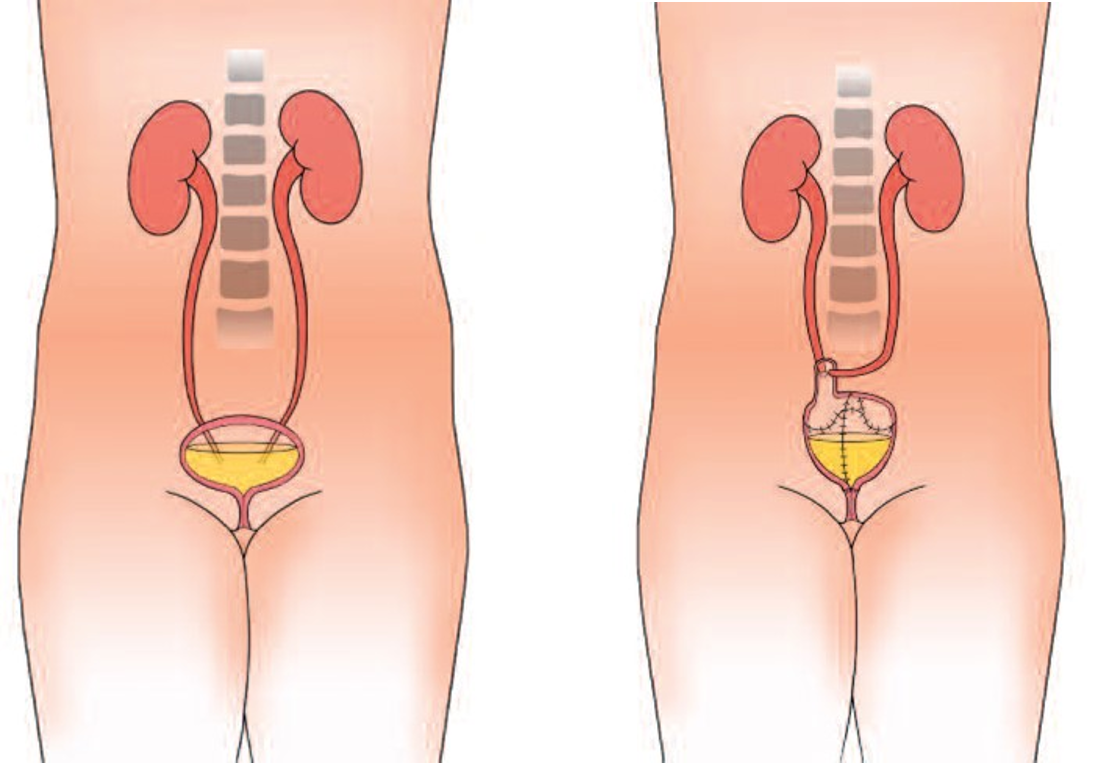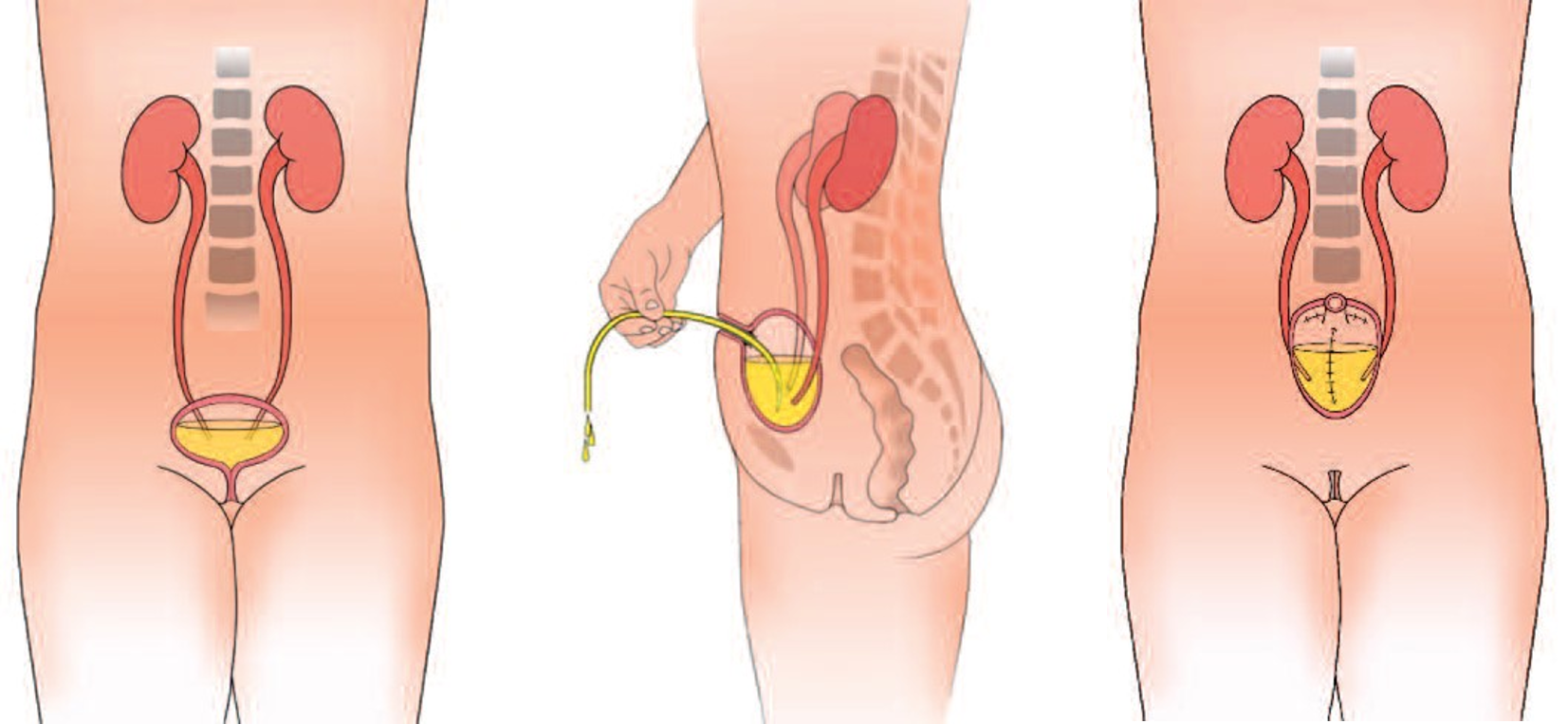Depending on the localization of the exit, we speak of a:
- Artificial urine outlet – Urostomy
- Artificial small bowel outlet – ileostomy
- Artificial colon outlet – colostomy
At the Department of Urology, we mainly deal with the urostomy, which is also known as the ileum conduit. The ureters coming from the kidneys are connected to a part of the small intestine that is isolated and well supplied with blood for this function. This serves as a passageway (ileum conduit) to the abdominal surface.
We will be happy to show you in a personal consultation which materials can be used for the exit and what you should pay attention to.
Urostomy / Ileum conduit

Normal bladder situation (left), urostomy / ileum conduit (right)
Continents replacement bladder
The replacement bladder with connection to the urethra is a bowel bag reservoir. The previous bladder is removed and a new bladder is formed from a piece of small intestine, which is then connected to the urethra. We will be happy to explain to you in a personal consultation what has changed in the function of the new bladder and what you need to pay attention to.

Normal bladder situation (left), continent replacement bladder (right)
Continuous umbilical pouch
This form of replacement bladder is called a pouch and is also a bowel bag reservoir. The previous bladder and urethra are removed and a new bladder is formed from a piece of small intestine. This is drained into the abdominal wall (usually at the navel). The pouch is emptied via a sterile disposable catheter. We will be happy to show you how the new reservoir works, what to look out for and how to learn how to empty it in a personal consultation.

Normal bladder situation (left), continent umbilical pouch (center, right)
Illustrations
- Alena Cimburek, Graphic Design Studio USZ, Zurich
- Willi R. Hess, scientific draughtsman Berne